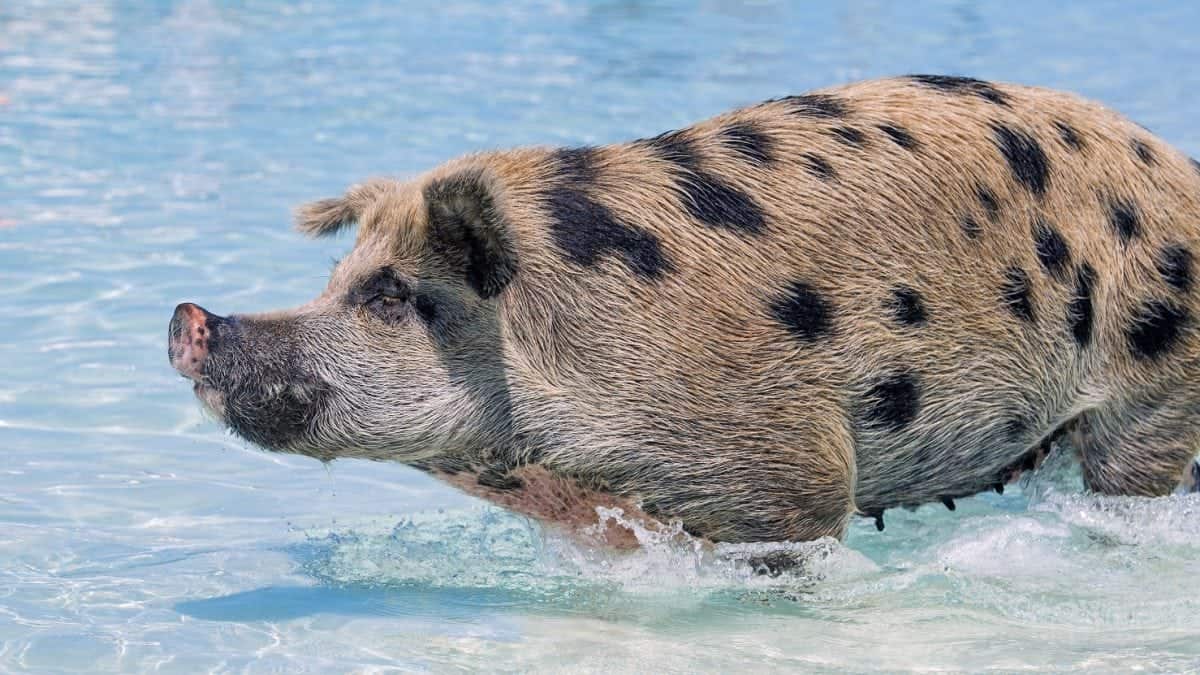
Swimming pigs on the island of Exuma in the Bahamas. See Masons copy MNPIGS: As temperatures soar across the UK these adorable shots show a group of pigs cooling off by swimming and frolicking in crystal clear water. The fun snaps, were taken by photographer Emmanuel Keller, 39, in the Bahamas at its famous 'Pig Beach' last month. This is on the island of Exuma which is uninhabited by humans but takes its unofficial name due to the colony of pigs that lives there.
As temperatures soar across the UK these adorable shots show a group of pigs cooling off in crystal clear water.
The fun snaps were taken by photographer Emmanuel Keller, 39, at the famous ‘Pig Beach’ in the Bahamas.
This animals are found on the island of Exuma which is uninhabited by humans but takes its unofficial name due to the colony of pigs that swim off its shores.
Describing when he spotted the animals, Emmanuel said: “I think they really enjoyed it playing in the water. When it’s hot they love to cool off in the water.
“When they were swimming it looked like they were doing it pretty well.
“They were all quite active and really enjoyed the attention of people. They especially liked it when they were getting food like carrots and bread.
“They kept running in and out of the water.”
The playful animals are known as “the swimming pigs of the Bahamas”, as they’re often seen frolicking in the sea around the islands.
How they originally arrived on the island is unknown – as they are not native to the region and the area is uninhabited by humans.
Some speculate that they were dumped on the island by a group of sailors who intended to come back to eat them but never made the return trip.
Stars such as Wayne Rooney and Kim Kardashian have been known to visit the area.
Tragically several of the pigs were reported to have died after tourists are thought to have fed them beer and rum.
Seven of the cute creatures were found dead earlier this year.
Last week, temperatures in London and Cambridge were hotter than the Bahamas at a scorching 25c – the hottest day of the year so far.
Forecasters predict the UK is to enjoy a three-month heatwave over the coming months.